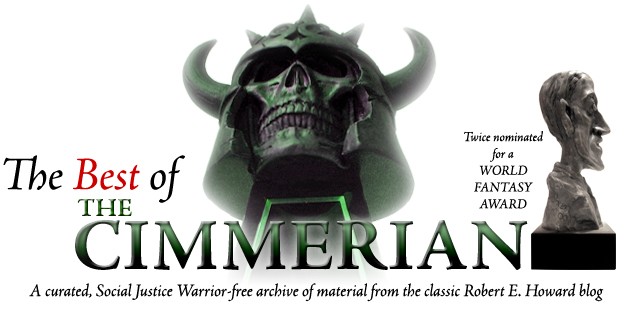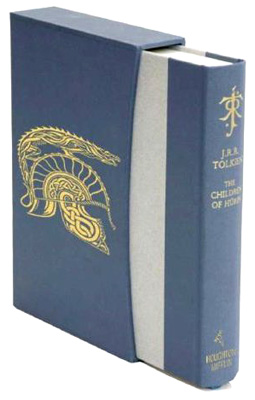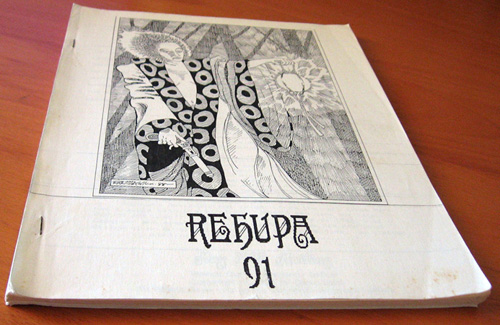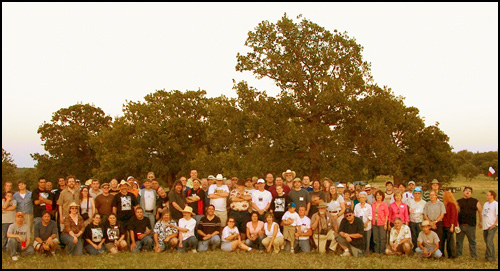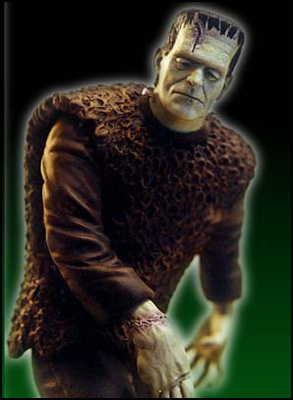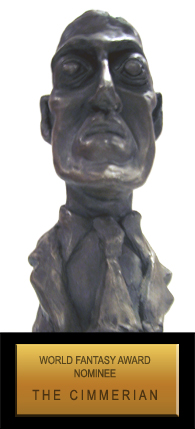A Haven for Sword-and-Sorcery
Tuesday, April 17, 2007
posted by Leo Grin

Howard Andrew Jones has been a good friend of Robert E. Howard scholarship for years. Best known as the guy who’s been studying, publishing, and popularizing the work of Adventure writer Harold Lamb, he has often used Lamb’s work to cast insight into REH’s. Readers of the V3n11 issue of TC (November 2006) know that Jones was a staunch defender of Two-Gun on one of the REH-themed panels at the 2006 World Fantasy Convention, thoroughly rebutting some “REH was juvenile” evaluations of our favorite Texan’s style.
Jones has recently become the editor at Black Gate magazine. While the publication has always tipped its hat to Sword-and-Sorcery and the classic writers who made the genre what it is, under Jones’ editorship it is slated to become even more of a repository for the latest and greatest in rugged fantastic adventure writing. Cimmerian proofreader, blogger, and regular contributor Steve Tompkins has already published a tribute to David Gemmell at the Black Gate website, and Cimmerian contributor Darrell Schweitzer has landed items in the magazine — in fact, an evaluation of Darrell’s fantasy writing is available there.
I especially liked the recent entry at the Black Gate blog, which details Mr. Jones’ foray into the massive BG slush pile. He constructs a fine list of clichés and problems with most of the stories he receives, warnings that potential authors would be wise to heed when writing their own efforts.
Fans of Howard’s desert adventure writing will definitely want to check out all of the great Harold Lamb books Jones has been willing into print over the past few years. Amazon now has the complete Khlit the Cossack stories of Lamb available in four volumes: Wolf of the Steppes, Warriors of the Steppes, Riders of the Steppes, and Swords of the Steppes. Jones notes on his Curved Saber website dedicated to Lamb that L. Sprague de Camp said of these stories:
They are tales of wild adventure, full of swordplay, plots, treachery, startling surprises, mayhem, and massacre, laid in the most exotic setting that one can imagine and still stay in a known historical period on this planet.
Pretty cool endorsement, I think you’ll agree. And note that, further on down the homepage of the site, Jones reveals that he got his Lamb collection from none other than John D. Clark, who once wrote to Robert E. Howard way back in 1936, and who later was involved in editing the Conan stories for hardcover in the 1950s. Small world.
As if all of that isn’t enough, Jones was also instrumental in creating and growing the foremost website dedicated to Sword-and-Sorcery, the aptly-named Sword-and-Sorcery.org. Lots of interviews, stories, reviews, and other material for the fantasy and S&S enthusiast, including several Howard related items.
So scoop up those Lamb books to get a major Howardian style fix of adventure fiction, and if you are a lover of Sword-and-Sorcery, do yourself a favor and subscribe (and submit) to Black Gate. With the proper editing and the right fan base, it could slowly grow into a modern answer to the great venues and authors of old.
